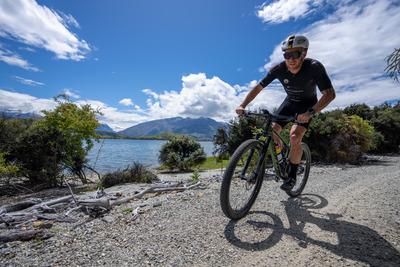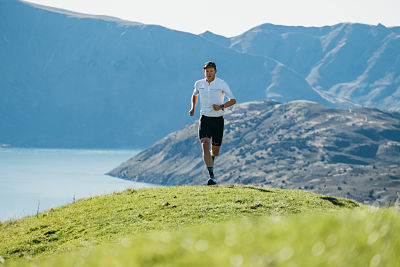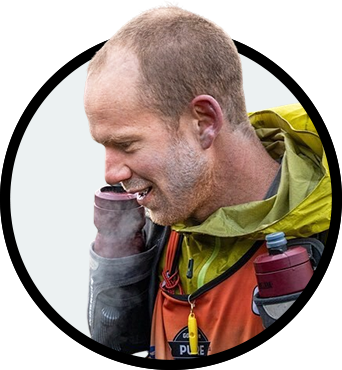Of the people who know me, some would be surprised to hear that I’ve suffered a few head injuries during my sporting career, while others will argue that the signs have always been there. I can already hear the references to my poor sense of humour, inability to remember all of the jobs my wife has asked me to do, and my woeful hand-eye coordination…
Unfortunately, the signs and symptoms of head trauma and concussion are often less obvious...
My experience of concussion
I gave up playing rugby as a 20-year-old in 2004 due to ongoing concussions on the field. At the time, this was simply a decision I was left to make for myself, knowing the long-term consequences of regular head knocks can’t be good, even though a number of doctors I’d seen over the previous few years were unable or unwilling to suggest I stopped playing.
Thankfully, the medical world has made big steps forward in understanding the effects of concussion, both in the short term (weeks and months following) and long term.
Many sports now have more robust procedures following a head knock that help the athlete and support staff make decisions around return to training and competing. Though in my experience, there's still plenty of grey area and inevitably the individual can end up making those decisions themselves, often based on a conflicting internal debate between what ‘feels’ appropriate versus the inevitable desire to return to doing what they love.
A segue into endurance sports in 2005 allowed a new target for all of my energy and competitiveness and, while I’d love to claim I was headed for All Blacks status had I remained a rugby player, it’s fair to say multisport and adventure racing led me into a world that’s given me more experiences and opportunities than I ever could’ve imagined. An added bonus was spending the next twenty-odd years avoiding concussions.
However, in October 2022 I was mountain biking near my home in Wanaka when I had a crash. Given I was alone at the time and have no recollection of what happened, I was lucky to suffer no injury other than a concussion. A couple of guys came across me and thankfully helped me get to a medical centre for assessment.

It soon became obvious that I'd lost consciousness during the crash and the dirt on the right side of my helmet suggested I'd hit my head. Whilst my repetitive questions to my wife about why I was at the doctors and what had happened were slightly entertaining at first, the novelty soon wore off when she was faced with the same questions every few minutes, such was my inability to remember anything or understand why I was in the medical centre.
Concussion recovery challenges
Once I was cleared of anything life-threatening such as a brain bleed, I was sent home to rest and a referral was made to see a physiotherapist in the coming days. What I remember most about those next few days was the overwhelming sense of tiredness (I slept a lot), irritation (from noise and light) and sense of isolation.
When all you are expected to do is ‘rest’, you soon find yourself alone as family and friends get on with their lives. Use of a phone and computer would quickly promote a throbbing headache and so my rest essentially involved lying in bed with the curtains drawn in an attempt to remove as much stimulation from my brain as I could.
Meanwhile, my thoughts gathered speed…
Admittedly I was worried about the neck pain and headaches as a sign that the recovery could be a long and bumpy one. My first few visits to the physio seemed positive as they ran tests to try to assess the level of trauma my brain had suffered. While all signs indicated that I would make a full recovery, nobody really knew how long it would take.
Initially, all I wanted to know was when the headaches would subside! I added massages and osteopathy to my treatment plan to help keep the neck and headaches healing, slowly bringing my phone and computer screen back into my life.
Those first few weeks taught me many things, but one of the biggest lessons was how much brain energy our screens soak up. No wonder there’s such a prevalence of mental health challenges in western society, our brains must get overstimulated for the vast majority of our waking hours. A big focus for me during those first few weeks was trying to use screens in small and intermittent doses.
As a professional athlete, I also needed to work my way back into some training, whilst trying to be sensible and measured in my approach. Once again it was soon apparent that the medical world is still learning how to approach this aspect of the rehab journey following head injury.
Ultimately, I was advised to listen to my body.
If the headaches worsened or I felt irritation and mood levels swing, I needed to stop. I also knew it made sense to remove anything high impact or risky. For me the indoor bike made sense as it didn’t require balance or coordination. I could close my eyes to remove too much visual stimulation and stop at any stage immediately so that I could be standing safely in my own home.
I decided to do a few 30-minute easy rides with no screens and just some mellow music playing (shout out to Kiwi band Fat Freddy’s Drop!). These early sessions within the first week of my rehab offered me empowerment, physical release and a sense of purpose.
It wasn’t until I met my new physio at Team New Zealand that I learned the new protocol in rehab from head injury now involves an earlier move back to light exercise. In the past, the recommendations have centred more around passive rest, but there’s been a shift towards active recovery early on, which anecdotally felt like a helpful step in my own rehab journey.

For the following 10-12 weeks I continued to suffer regular headaches and neck pain. My physiotherapists, osteopath and massage therapist were all instrumental in helping my body and brain rebuild, but also helped keep me positive and able to believe that one day I’d be OK again.
This is another example of where surrounding yourself with a good team can be so powerful when the journey is tough and the light isn’t always obvious at the end of the tunnel.
Lessons from a concussion recovery
Fast forward to March 2023 and just over four months since my bike crash. While I cannot say for sure that I’m 100% recovered, I would suggest I’m very close.
I’m back to full training volume and intensity, able to use screens to my heart’s content (not necessarily a good thing!) and no longer suffer headaches or neck discomfort. For most of these past four months I have slept more than I used to, no doubt due to my brain needing more downtime to repair, but I'm back to a fairly typical sleep cycle now too.
I'm acutely aware my injury and recovery process could have been much more severe and many people I've spoken to about their own concussion experiences have had much longer lasting effects, so I do consider myself very lucky. However, talking openly to others about head injuries has in itself been therapeutic and therein lies another important lesson.
On this occasion, my story has a happy ending involving a successful trial in December for a position as a ‘cyclor’ with Team New Zealand in their defence of the 2024 America’s Cup. Coming just six weeks after my injury, I was extremely apprehensive about my chances but even more so my ability to perform so soon after my crash. I do believe my success in the trials had a lot to do with the medical team that supported my rehab.
My wife Amy also became a single mother of three (I was about as dependent as our 8-year-old son Flynn and 6-year-old daughter Matilda in the first few weeks following my crash) and without her I’d have stood little chance of making such a quick and thorough recovery. So, once again I'm reminded of the importance of surrounding myself with the right people.
The goals from here are to try and help the team win the America’s Cup, improve my dad jokes, remember more of the jobs my wife has given me, and practice my hand-eye coordination so that I might one day actually catch a ball while fielding in a family game of backyard cricket.
